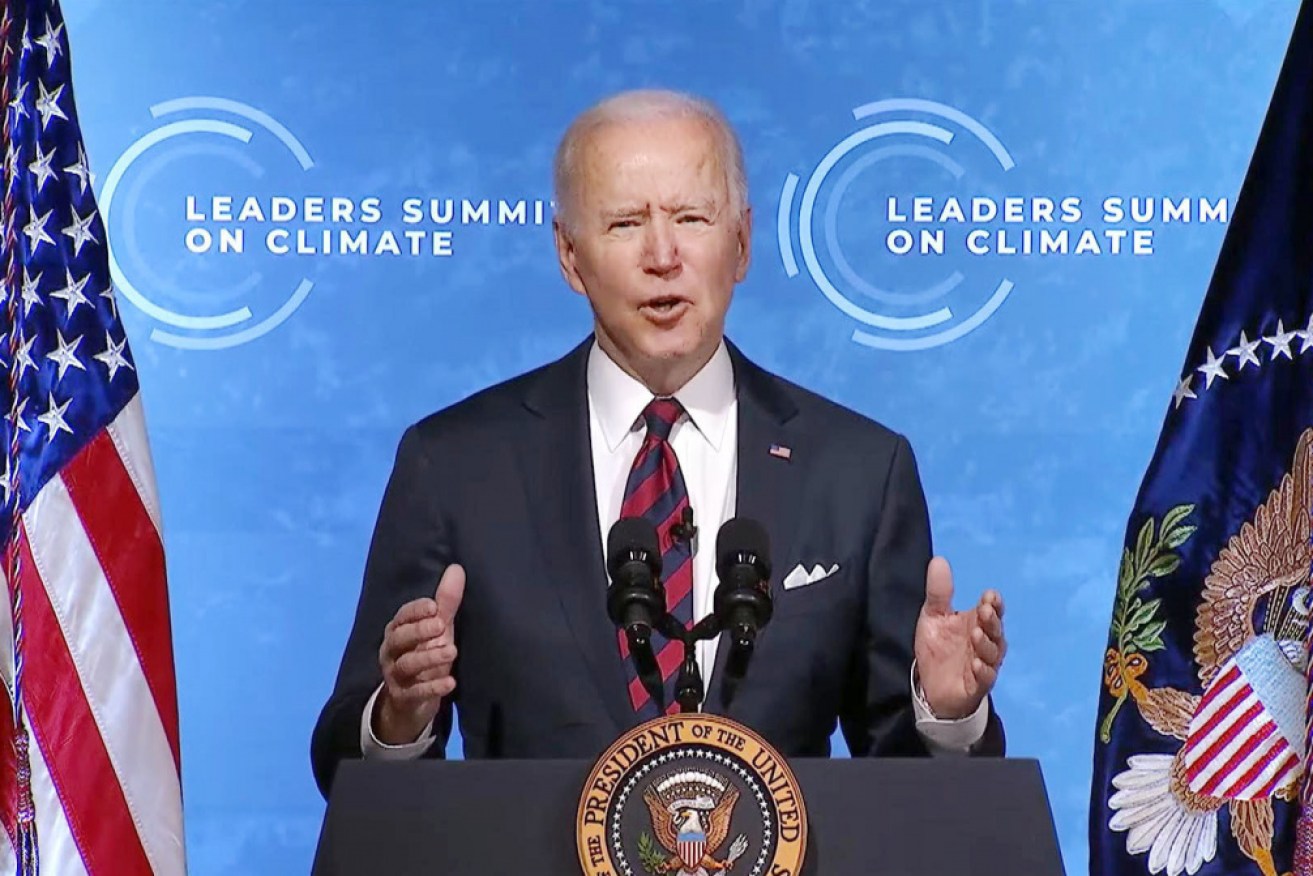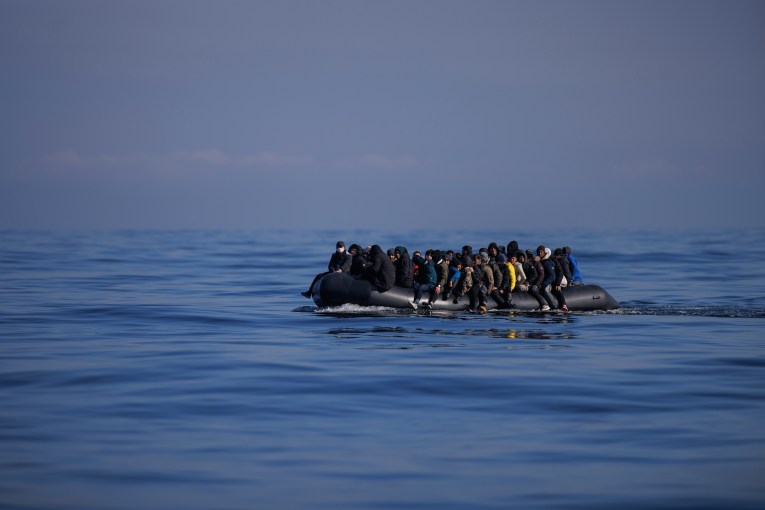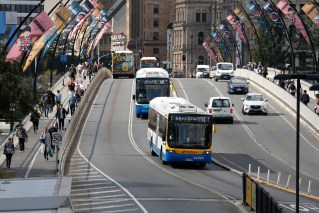Scott Morrison resists pressure to set new climate goals as US pledges to halve emissions


US President Joe Biden spoke at the virtual climate summit on Friday morning. Photo: AAP
The United States and other countries have hiked their targets for slashing greenhouse gas emissions, while Prime Minister Scott Morrison says technology – not new targets — will get Australia to net-zero.
US President Joe Biden unveiled the goal to cut emissions by 50 to 52 per cent from 2005 levels at the start of a two-day climate summit kicked off on Earth Day and attended virtually by leaders of 40 countries including big emitters China, India and Russia.
The US, the world’s second-leading emitter after China, seeks to reclaim global leadership in the fight against global warming after former president Donald Trump withdrew the country from international efforts to cut emissions.
Mr Biden said “the US is back” and called cutting emissions a “moral imperative”.
“This is the decade we must make decisions that will avoid the worst consequences of the climate crisis,” he said from the White House.
The announcement marks an important milestone in Mr Biden’s broader plan to decarbonise the US economy entirely by 2050 – an agenda he says can create millions of good-paying jobs but which many Republicans say they fear will damage the economy.
The emissions cuts are expected to come from power plants, automobiles, and other sectors across the economy, but the White House did not set individual targets for those industries.
Scott Morrison says technology is the answer
Meanwhile, Scott Morrison said the focus here would not be on new goals but on technology. He again avoided putting a time frame on when Australia could achieve net-zero emissions but reassured other leaders he was “on the pathway”.
In a short speech, the start of which was impacted by audio issues, Mr Morrison said Australia would “update our long-term emissions reduction strategy” later in 2021.
“Our goal is to get there as soon as we possibly can, through technology that enables and transforms our industries, not taxes that eliminate them, and the jobs and livelihoods they support and create, especially in our regions,” he said.
“For Australia, it is not a question of if, or even by when for net-zero, but importantly how.”
The PM spoke of wanting to produce the “cheapest clean hydrogen in the world” before directly addressing Mr Biden to compare Silicon Valley with Australia’s planned “hydrogen valleys”.
Ahead of President @JoeBiden's climate summit this week, we take a look at some of the key differences between Australia and the United States when it comes to climate… 🇦🇺🇺🇸
Plus, learn more about what's happening in international climate action here: https://t.co/ASt7pAsXTb pic.twitter.com/7iWqSUWd0F— Climate Council (@climatecouncil) April 22, 2021
Leaders react to US pledge and set new goals
The UK Prime Minister Boris Johnson called the new US goal “game changing” as two other countries made new pledges.
Prime Minister Yoshihide Suga, who visited Mr Biden at the White House this month, raised Japan’s target for cutting emissions to 46 per cent by 2030, up from 26 per cent.
Environmentalists wanted a pledge of at least 50 per cent while Japan’s powerful business lobby has pushed for policies that favour coal.
Canada’s Prime Minster Justin Trudeau, meanwhile, raised his country’s goal to a cut of 40 to 45 per cent by 2030 below 2005 levels, up from 30 per cent.
Brazil’s President Jair Bolsonaro announced his most ambitious environmental goal yet, saying the country would reach emissions neutrality by 2050, 10 years earlier than the previous goal.
Greenpeace UK’s head of climate, x, said the summit had more targets than an archery competition.
“Targets, on their own, won’t lead to emissions cuts,” she said.
“That takes real policy and money. And that’s where the whole world is still way off course.”
Most of the leaders attending the summit did not offer new emissions goals.
Chinese President Xi Jinping said China expected its carbon emissions to peak before 2030 and that the country would achieve net zero emissions by 2060.
Xi said China will gradually reduce its coal use from 2025 to 2030.
China, a leader in producing technology for renewable energy like solar panels, burns large amounts of coal for electricity generation.
Russian President Vladimir Putin proposed giving preferential treatment for foreign investment in clean energy projects but also made an apparent reference to the US being historically the world’s top emitter.
“It is no secret that the conditions that facilitated global warming and associated problems go way back,” Mr Putin said.
The new US target nearly doubles former president Barack Obama’s pledge of an emissions cut of 26-28 per cent below 2005 levels by 2025.
The summit is the first in a string of meetings of world leaders – including the G7 and G20 – ahead of annual UN climate talks in November in Scotland.
That serves as the deadline for nearly 200 countries to update their climate pledges under the Paris agreement, an international accord set in 2015.
Leaders of small island countries vulnerable to rising seas, like Antigua and Barbuda and the Marshall Islands, also spoke at the summit.
World leaders aim to limit global warming to 1.5C above pre-industrial levels, a threshold scientists say can prevent the worst impacts of climate change.
-with AAP








